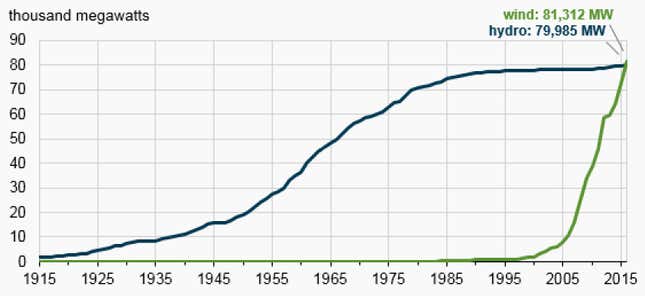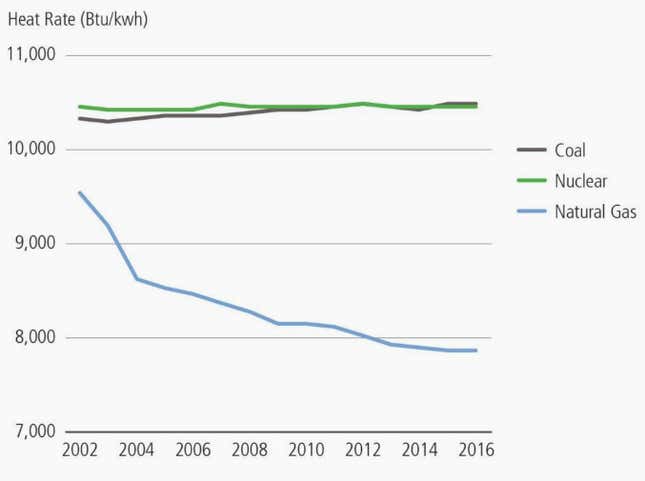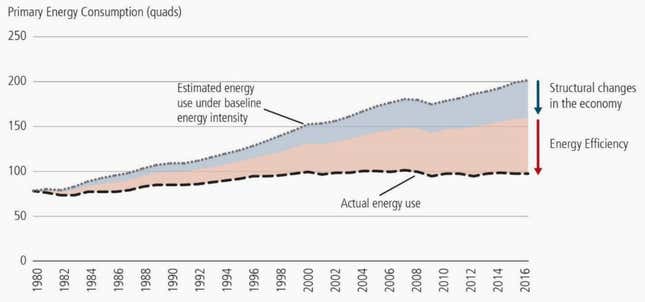In April, US energy secretary Rick Perry asked his department to produce a report on electricity markets and reliability. The routine request made some uncomfortable: Environmental groups, for instance, worried that facts might get twisted to recommend subsidizing the coal industry, which has seen a historical decline in the last few decades.
But staffers at the Department of Energy (DOE) have done the work, and their answer is not what the coal lobby would like to hear. “The biggest contributor to coal and nuclear plant retirements has been the advantaged economics of natural gas-fired generation,” says the report, which was published on Aug. 23.
The report’s chart below clearly shows the story of the death of coal:
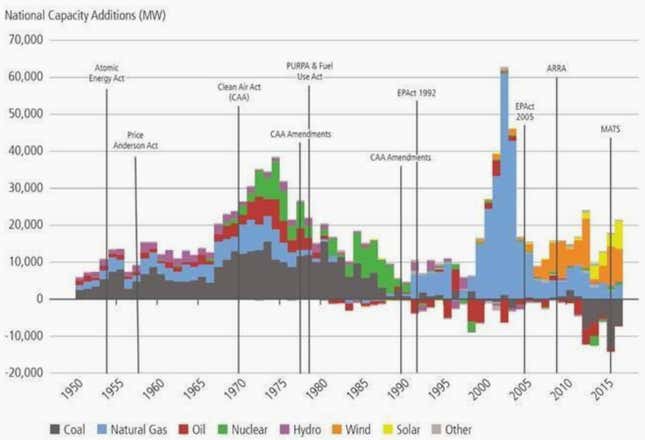
It also found that the rise of intermittent renewable energy, such as wind and solar, hasn’t yet created any big problems for reliability and resilience of the electricity grid. And it recommends that the department shouldn’t intervene in energy markets, such as using funds to support coal.
Perry’s own letter accompanying the report mentions that subsidies are affecting energy markets (renewable energy receives public funding) but failed to mention the effect that cheap natural gas was having.
Between 2012 and 2017, the US shut approximately 50 gigawatts (GW) of coal-fired generation capacity. If planned retirements are taken into consideration, the future for coal looks even bleaker.
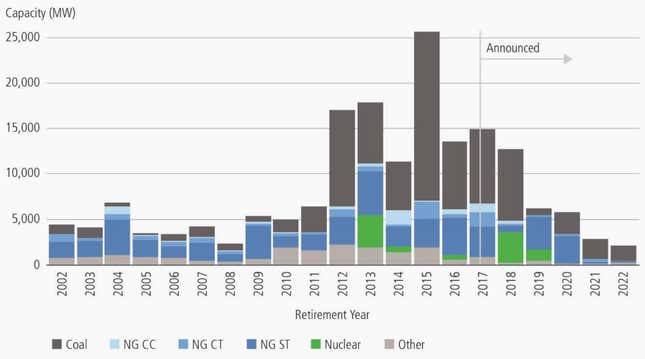
Former president Barack Obama’s Clean Power Plan was designed to help the US cut emissions by moving towards using technologies such as carbon capture and increasing the share of renewable energy in the mix. The Clean Power Plan was repealed in March by the Trump administration, which some members of the Republican party hoped would spur the growth of coal power plants. The DOE’s projections suggests it won’t happen:
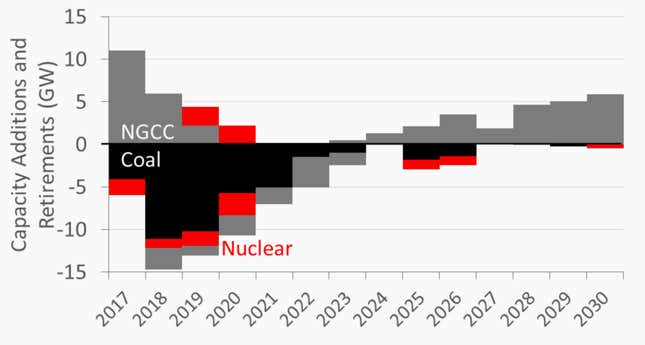
Other factors contributing to the decline of the dirtiest fossil fuel are large installations of renewable energy, regulations that raise the cost of coal power, and low growth in electricity demand. See for yourself:
